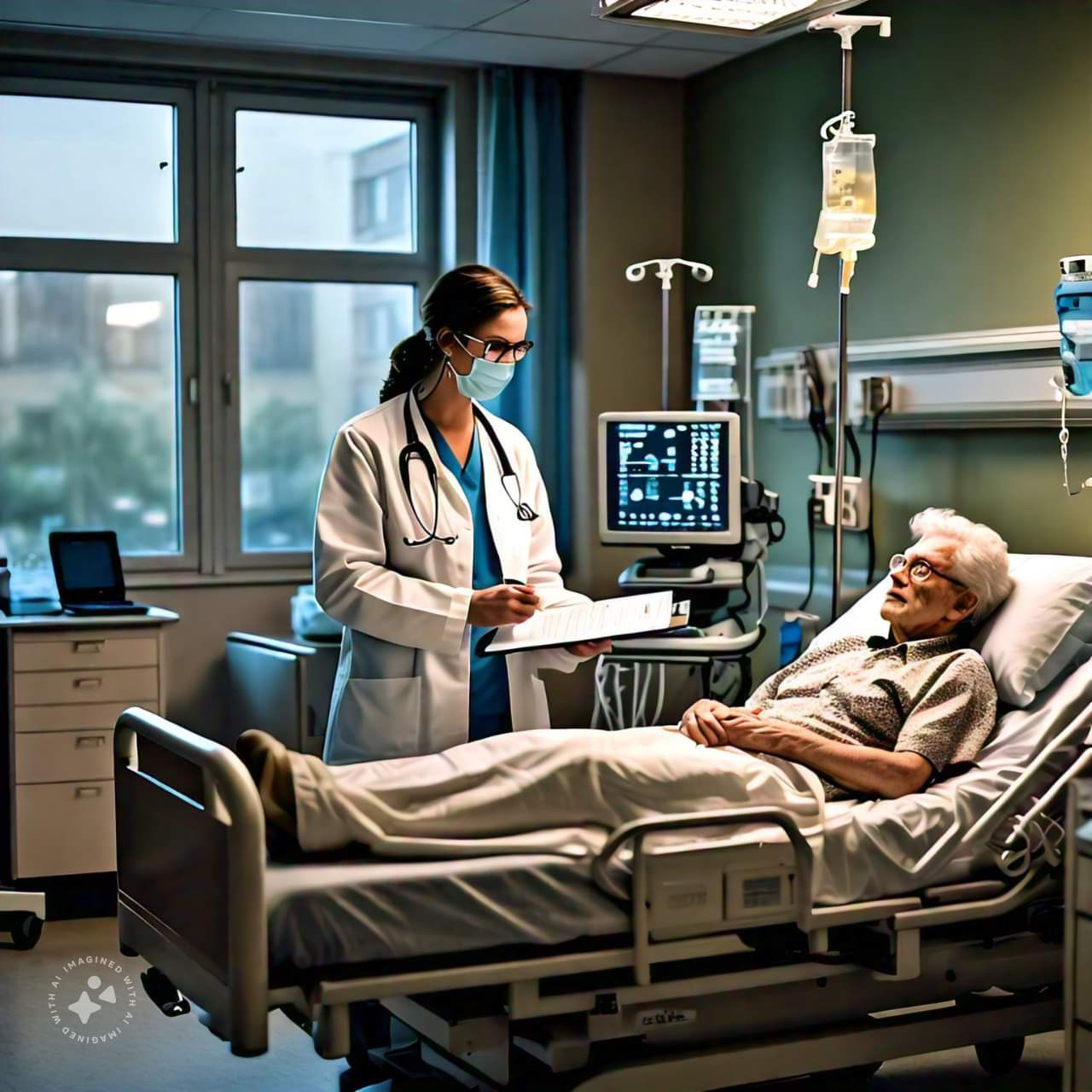
The healthcare sector is growing rapidly, and medical assistance jobs have become integral to the success of the entire industry. These roles are essential in various healthcare settings, from hospitals and clinics to private practices. Medical assistants support physicians, nurses, and other healthcare professionals, ensuring smooth operations and high-quality patient care. With the rising demand for healthcare services due to an aging population and increased access to health coverage, medical assistance jobs are in high demand, offering stable and rewarding career paths.
This article will provide an in-depth look into the field of medical assistance, discussing job roles, responsibilities, required skills, pathways to enter the profession, and its future outlook.
What is a Medical Assistance Job?
Medical assistance jobs cover a broad spectrum of roles focused on supporting healthcare providers with both clinical and administrative tasks. Medical assistants (MAs) are versatile professionals who perform duties ranging from taking patients’ vital signs to managing medical records and scheduling appointments. Their responsibilities vary depending on the healthcare setting and specialization, but the core focus is to ensure efficient patient care and streamlined operations within the facility.
Medical assistance jobs generally fall into two main categories: clinical and administrative. Some medical assistants specialize in one area, while others may take on both types of responsibilities.
1.Clinical Medical Assistants: These professionals work directly with patients, assisting doctors during examinations, collecting lab samples, taking medical histories, and preparing patients for procedures. Clinical tasks require a working knowledge of medical procedures, basic anatomy, and medical terminology.
2.Administrative Medical Assistants: These roles focus on the business and clerical aspects of healthcare. Duties include scheduling appointments, managing patient records, processing insurance forms, and handling billing. Administrative medical assistants ensure the smooth functioning of the front desk and back-office operations.
Medical assistants may work in diverse settings, including hospitals, outpatient clinics, urgent care centers, and specialty practices like pediatrics, cardiology, and dermatology.
Responsibilities of Medical Assistants
The responsibilities of medical assistants vary widely depending on the setting and specialization. However, the following are some common tasks:
•Taking Patient Vital Signs: Measuring blood pressure, pulse, temperature, and respiration is a fundamental part of most medical assistant roles, helping doctors and nurses assess patient health.
•Assisting with Examinations and Procedures: Medical assistants prepare exam rooms, assist during medical procedures, and ensure that doctors have the necessary tools for the examination.
•Administering Injections and Medications: In some states, trained medical assistants can give injections and medications under a physician’s supervision.
•Handling Laboratory Samples: MAs may collect samples like blood, urine, or tissue for laboratory testing, as well as conduct certain basic tests themselves, like glucose monitoring.
•Patient Communication and Education: Medical assistants often provide instructions to patients regarding medication, diet, and lifestyle adjustments. They may also guide patients on pre- or post-procedure care.
•Scheduling Appointments and Managing Records: On the administrative side, medical assistants handle patient appointment scheduling, update medical records, and ensure proper documentation in electronic health records (EHR) systems.
•Insurance and Billing: Some medical assistants are responsible for processing insurance claims, managing billing inquiries, and helping patients understand insurance policies and payment options.

Skills and Qualities for Success in Medical Assistance Jobs
Medical assistance is a fast-paced profession that requires a combination of technical knowledge and interpersonal skills. Here are some essential skills and qualities for success:
•Clinical Skills: Knowledge of medical terminology, anatomy, physiology, and clinical procedures is essential, especially for clinical medical assistants.
•Attention to Detail: Medical assistants need to be meticulous, as their work often involves handling sensitive patient information, preparing medications, and documenting medical records accurately.
•Communication Skills: Strong verbal and written communication skills are vital, as medical assistants often serve as the link between patients and healthcare providers, conveying important information and instructions.
•Compassion and Patience: Medical assistants work with a diverse patient population. Demonstrating empathy, patience, and understanding can significantly impact patients’ experiences.
•Organizational Abilities: Managing multiple tasks, from scheduling to documentation, requires effective time management and organization.
•Technological Proficiency: Familiarity with EHR software and other medical technologies is essential, as much of a medical assistant’s work involves using digital tools for record-keeping and patient care.
•Adaptability: The healthcare environment is dynamic, and medical assistants must be prepared to handle varied tasks and respond to changes in procedures or patient needs.
Education and Certification Pathways for Medical Assistants
While medical assistance jobs are open to high school graduates, most employers prefer candidates with formal training or certification. There are various pathways to enter the field:
1.Postsecondary Certificate or Diploma Programs: Many community colleges, vocational schools, and technical institutions offer medical assisting programs that provide the skills and knowledge needed for the job. These programs usually take about 9 to 12 months to complete and include both classroom instruction and clinical practice.
2.Associate Degree Programs: An associate degree in medical assisting typically takes about two years and provides a broader education. This option can offer more career advancement opportunities and prepare candidates for specialized roles.
3.Certification: While certification is not mandatory, it is highly recommended as it demonstrates a commitment to the profession and may increase job prospects. Some widely recognized certifications include:
•Certified Medical Assistant (CMA) by the American Association of Medical Assistants (AAMA)
•Registered Medical Assistant (RMA) by the American Medical Technologists (AMT)
•National Certified Medical Assistant (NCMA) by the National Center for Competency Testing (NCCT)
•Certified Clinical Medical Assistant (CCMA) by the National Healthcareer Association (NHA)
Certification requirements vary by certifying body but generally require candidates to complete an accredited medical assisting program and pass an exam.
Job Outlook and Salary Potential
The U.S. Bureau of Labor Statistics (BLS) reports that the employment of medical assistants is expected to grow by 16% from 2021 to 2031, much faster than the average for all occupations. This growth is driven by an aging population, expanded access to healthcare services, and the increasing need for supportive healthcare roles.
The median annual salary for medical assistants as of 2022 was approximately $38,000, with experienced professionals earning higher wages, especially in specialty practices or urban areas. Certified medical assistants generally command higher salaries than non-certified assistants due to their specialized training and credentials.
Specialized Areas within Medical Assistance
As healthcare services become more specialized, medical assistants have opportunities to work in various niches, including:
•Pediatrics: Assisting with children’s healthcare, working alongside pediatricians, and helping young patients feel comfortable.
•Cardiology: Supporting cardiologists in conducting EKGs, stress tests, and patient education on heart health.
•Ophthalmology and Optometry: Assisting eye care professionals with vision exams, preparing patients for surgeries, and educating them about eye health.
•Geriatrics: Working with elderly patients, addressing their unique needs, and assisting in long-term care settings.
Specialization can enhance job satisfaction, improve salary potential, and provide focused career paths for medical assistants interested in a particular field of medicine.
The Future of Medical Assistance Jobs
The healthcare industry’s evolution, driven by advancements in medical technology and patient-centered care, has a direct impact on medical assistance jobs. Medical assistants are likely to take on more complex tasks, requiring ongoing training and adaptability. The role is becoming more integral as healthcare shifts towards preventative care, telemedicine, and holistic patient management.
Medical assistants who keep up with new technologies, pursue certifications, and enhance their clinical and administrative skills will find ample opportunities for advancement. Furthermore, the field of medical assisting can serve as a stepping stone to other healthcare roles, such as nursing, healthcare management, or specialized medical support positions.
Conclusion
Medical assistance jobs offer a fulfilling career path for those interested in healthcare and patient interaction. The demand for skilled medical assistants is rising, and the field provides numerous opportunities for specialization, growth, and advancement. With the right training and certifications, medical assistants can enjoy a stable career that not only supports healthcare providers but also makes a direct impact on patients’ lives.
Whether you’re a recent graduate exploring career options or a professional considering a career change, medical assistance jobs provide a versatile and rewarding way to be part of the growing healthcare industry.
